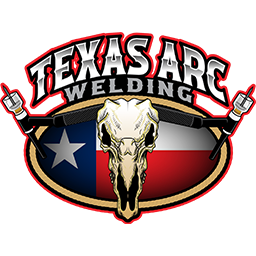Choosing between MIG and TIG welding as your first professional skill can significantly impact your career trajectory and earning potential. Both processes are essential in modern welding, but they serve different purposes and offer distinct advantages in the job market. Understanding these differences will help you make an informed decision about your welding education and career path.
MIG welding, also known as Gas Metal Arc Welding (GMAW), uses a continuously fed wire electrode and shielding gas to create strong, clean welds. This process has become the backbone of modern manufacturing and construction due to its speed, versatility, and relatively easy learning curve.
Speed and Efficiency: MIG welding allows for faster welding speeds compared to most other processes, making it ideal for production environments where time equals money.
Versatility: Works effectively on various metals including steel, stainless steel, and aluminum, though each requires specific wire types and gas mixtures.
Ease of Learning: The continuous wire feed and stable arc make MIG welding more forgiving for beginners, allowing faster skill development.
All-Position Capability: While easiest in flat and horizontal positions, skilled MIG welders can work in vertical and overhead positions effectively.
TIG welding, or Gas Tungsten Arc Welding (GTAW), uses a non-consumable tungsten electrode and separate filler rod to create precise, high-quality welds. This process requires more skill but produces superior results, especially on thin materials and critical applications.
Precision and Control: Offers the highest level of control over heat input and weld bead appearance, essential for critical applications.
Superior Quality: Produces the cleanest, strongest welds with minimal spatter and excellent appearance.
Material Flexibility: Excellent for thin materials, exotic metals, and dissimilar metal joining.
Aesthetic Results: Creates beautiful, consistent weld beads that often require no post-weld cleanup.
Week 1-2: Basic setup, safety procedures, and flat position weldingWeek 3-4: Horizontal and vertical position developmentWeek 5-8: Advanced techniques, different materials, and speed improvementMonth 3-6: Production-level skills and specialized applications
Most students can achieve basic proficiency in MIG welding within 4-6 weeks of consistent practice, making it an excellent choice for those seeking quick entry into the workforce.
Week 1-3: Hand coordination, arc starting, and basic bead runningWeek 4-8: Filler rod addition and joint welding techniquesMonth 3-6: Advanced positions and material-specific techniquesMonth 6-12: Precision work and specialized applications
TIG welding typically requires 3-6 months to develop professional-level skills, but the investment pays off with higher wages and specialized opportunities.
[Our comprehensive welding programs at Texas Arc Welding Academy provide structured training in both processes, allowing you to master the fundamentals efficiently.]
Welding Machine: Typically less expensive, ranging from $500-$3,000 for professional unitsWire Feed System: Built into most machines, requires periodic wire replacementShielding Gas: Usually CO2, Argon/CO2 mix, or pure Argon depending on materialMinimal Hand Tools: Wire cutters, contact tip cleaners, and basic maintenance tools
Welding Machine: Higher initial cost, $1,000-$5,000+ for quality professional unitsTungsten Electrodes: Various types for different materials, require periodic resharpeningFiller Rods: Separate purchase, multiple alloys needed for different applicationsSpecialized Tools: Tungsten grinders, gas lens setups, and precision measurement tools
Production Welding: $35,000-$50,000 annually in manufacturing environmentsConstruction Welding: $40,000-$60,000 annually for structural and general constructionAutomotive Repair: $38,000-$55,000 annually in collision repair and custom shopsFabrication Shops: $42,000-$65,000 annually depending on complexity and location
Aerospace Welding: $50,000-$80,000 annually for certified aerospace weldersPrecision Fabrication: $45,000-$70,000 annually in high-end manufacturingPipe Welding: $60,000-$100,000+ annually for certified pipeline weldersSpecialized Repair: $50,000-$85,000 annually for industrial maintenance
The Bureau of Labor Statistics projects 8% growth in welding careers through 2031, with specialized TIG welders seeing higher demand.
Texas's diverse industrial landscape creates strong demand for both processes:
MIG Welding Demand: High demand in construction, manufacturing, and oil field services. The state's continuous infrastructure development and manufacturing growth ensure steady opportunities.
TIG Welding Demand: Particularly strong in aerospace (Houston space industry), petrochemical refining, and precision manufacturing. Higher specialization requirements mean less competition and better compensation.
Most successful welders eventually master both processes. Consider this progression:
[Texas Arc Welding Academy offers dual-process training programs that efficiently teach both MIG and TIG welding, maximizing your career options.]
The American Welding Society provides comprehensive safety guidelines for both processes that every welder should study.
MIG welding faces more automation pressure in simple production applications, while TIG welding's precision requirements make it more resistant to automation, especially in custom and repair work.
Both processes continue evolving with digital controls, pulsed welding capabilities, and advanced materials. Staying current with technology advances is crucial for career longevity.
Texas's industrial diversity supports both processes, but location within the state can influence demand. Houston's aerospace and petrochemical industries favor TIG skills, while Dallas-Fort Worth's manufacturing and construction sectors emphasize MIG welding.
Both MIG and TIG welding offer excellent career opportunities in Texas's robust industrial economy. Your choice should align with your career timeline, learning preferences, and long-term goals. MIG welding provides faster entry and broader opportunities, while TIG welding offers higher specialization and earning potential.
The most successful welders eventually master both processes, using MIG for efficiency and production work while employing TIG for precision and high-value applications. Consider starting with the process that best matches your immediate needs, then expanding your skills as your career develops.
Regardless of your choice, invest in quality training that provides hands-on experience with industry-standard equipment. The skills you develop now will determine your success and earning potential throughout your welding career.
[Ready to start your welding journey? Contact Texas Arc Welding Academy to discuss which training path best fits your career goals and schedule a facility tour to see both MIG and TIG welding in action.]
